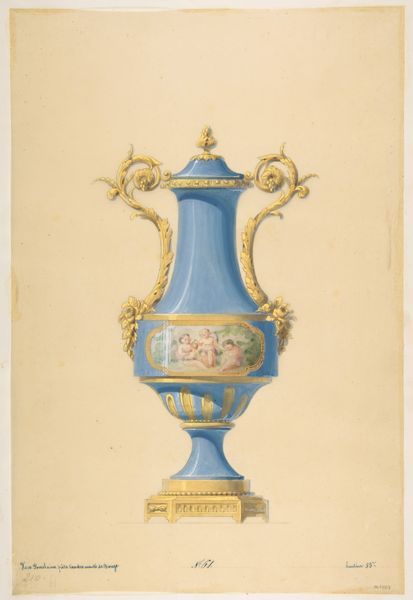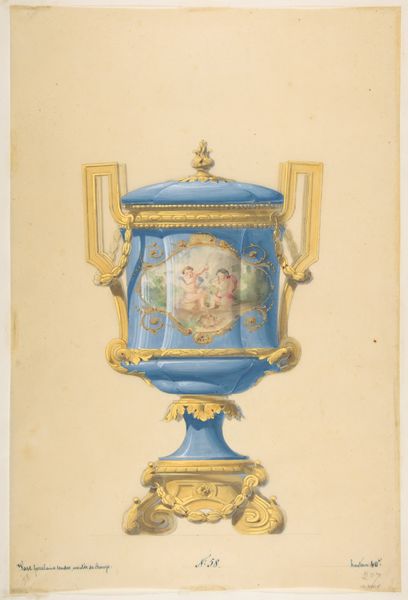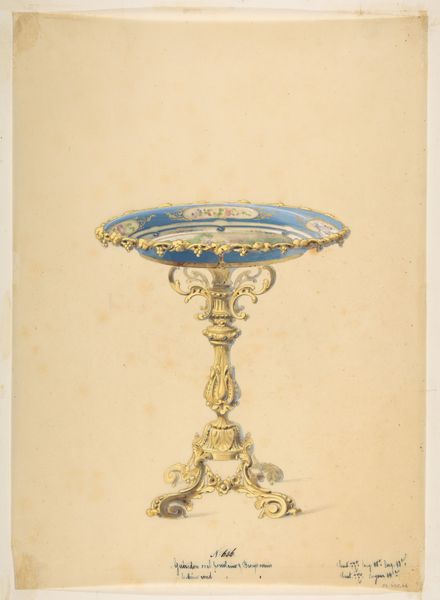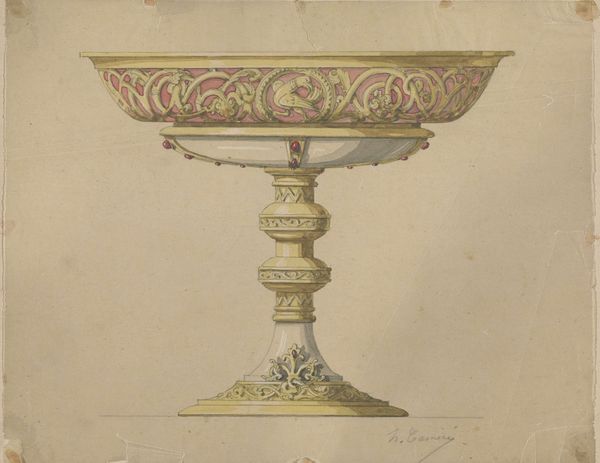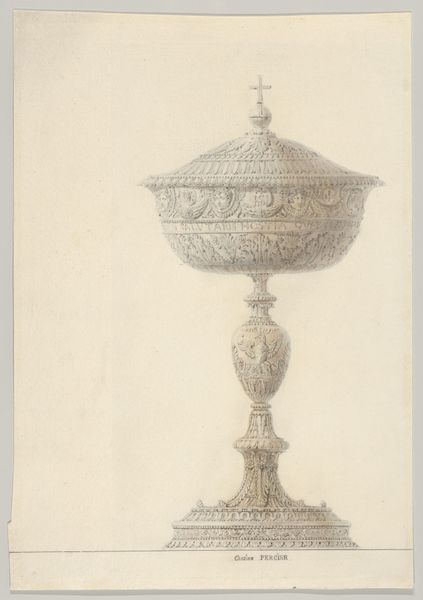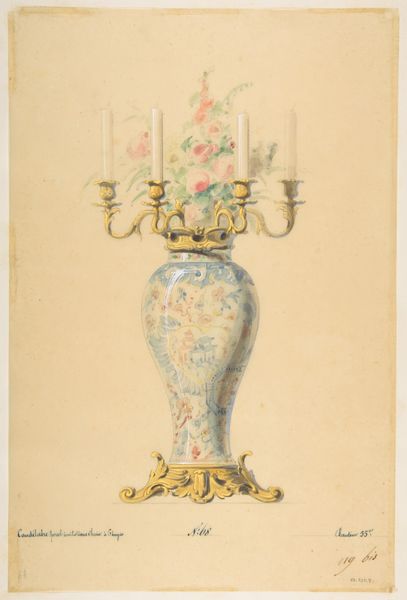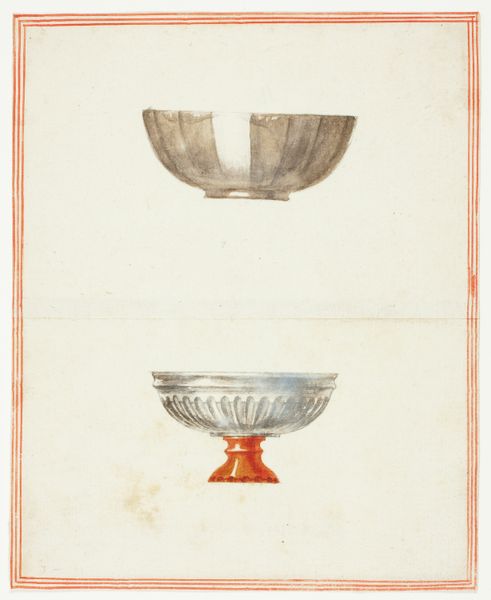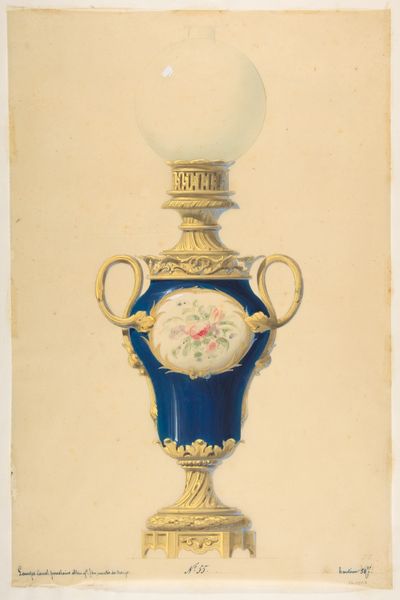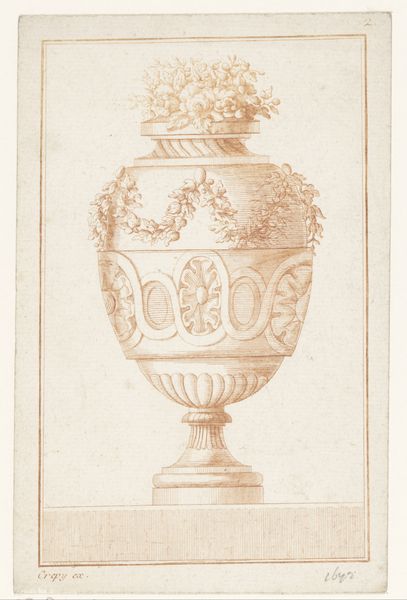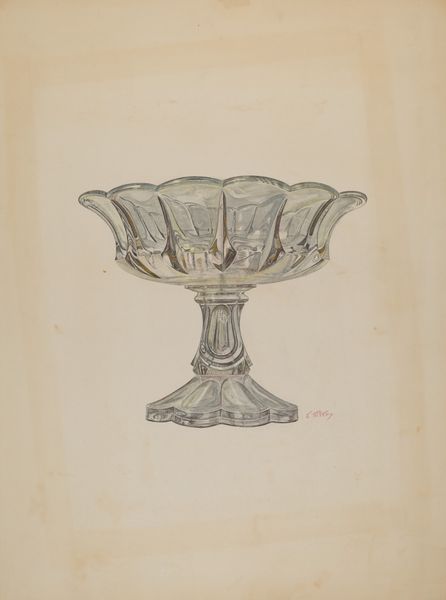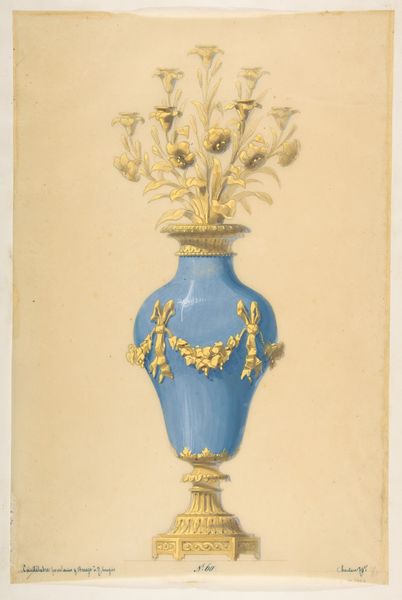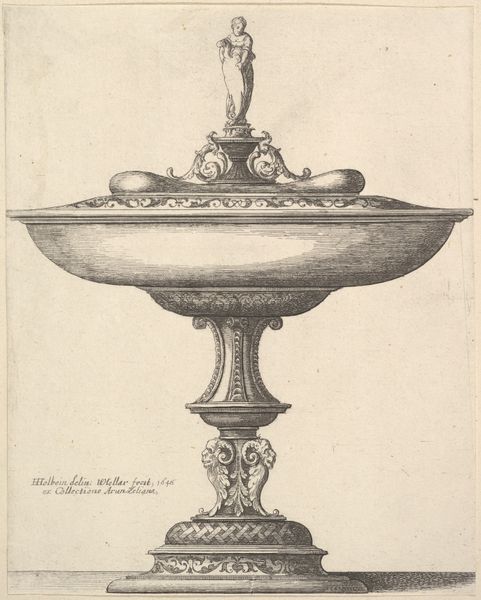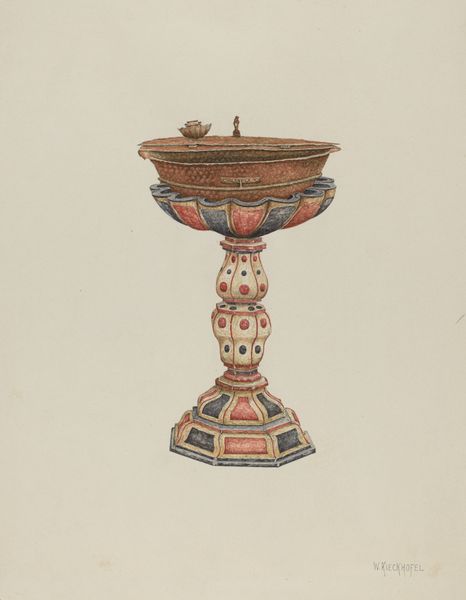
drawing, print, gouache, paper, watercolor, chalk
#
drawing
#
water colours
#
baroque
# print
#
gouache
#
paper
#
watercolor
#
chalk
#
watercolour illustration
#
watercolor
Dimensions: 196 × 172 mm
Copyright: Public Domain
Curator: Here we have "Lapis Covered Dish on Stand," a work currently attributed to Giuseppe Grisoni. The Art Institute of Chicago houses this piece. It is difficult to precisely pinpoint the creation date, and it incorporates mediums like chalk, watercolor, gouache, and print on paper. Editor: It's arresting! The luminous quality of that blue is striking against the creamy paper. The execution feels simultaneously precise and dreamlike, with an almost otherworldly sheen. Curator: Indeed, Grisoni really focused on conveying opulence. Consider how lapis lazuli itself was sourced, processed, and traded—it's the very essence of luxury extracted and circulated within specific socio-economic channels. Editor: You're right; the choice of lapis is interesting. Lapis wasn’t just beautiful; it was also tied to status and power. Objects rendered in such precious pigment functioned within specific courtly social rituals, often signifying more than just aesthetic appreciation. I wonder, to whom was this imagery intended to appeal and for what specific sociopolitical purpose? Curator: It serves as a kind of ideal, perhaps never intended for tangible realization. It represents mastery of materials and artistic skill that bolstered his standing in an increasingly competitive and networked art world. Editor: Good point. What’s especially compelling to me is that we see this detailed attention to materials. The simulated weight and feel are meticulously represented, even within the limitations of watercolor. Was it common for artists of this era to create conceptual renderings of objects rather than actual pieces? Curator: Such renderings circulated among patrons and workshops. They acted as proposals and demonstrations, mediating the spaces of making and desire. These drawings provided potential patrons a tangible object through which their aspirations and wealth could manifest. Editor: Thinking about art’s circulation as an active participant in society is what sticks with me. A lovely reminder that it embodies material transformation with social purpose. Curator: Agreed, considering this dish on stand through the prism of materials and processes sheds light not only on its aesthetic merits but also the economic and social networks in which the artist was situated.
Comments
No comments
Be the first to comment and join the conversation on the ultimate creative platform.
